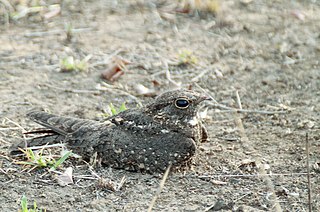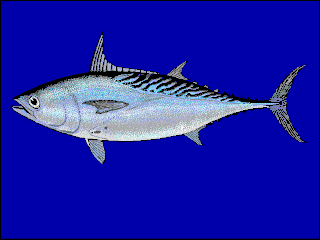Related Research Articles

The western Mosquitofish is a species of freshwater fish, also known commonly, if ambiguously, as simply Mosquitofish or by its generic name, Gambusia, or by the common name gambezi. Its sister species, the eastern mosquitofish is also referred to by these names.

The little swift, is a small species of swift found in Africa and southwestern Asia, and are vagrants and local breeders in southern Europe. They are found both in urban areas and at rocky cliffs where they build nests in a way typical of all members of the order Apodiformes. The genus name Apus is Latin for a swift, thought by the ancients to be a type of swallow without feet. The Latin specific affinis means similar to or related to, but in this case the species that the little swift supposedly resembles is not clear from the description. A population formerly considered to be an eastern subspecies of little swift is now separated as a distinct species, the house swift.
Sorbia may refer to:
Lusatian may refer to:

Claosaurus is a genus of hadrosauroid that lived during the Late Cretaceous Period (Campanian).

The savanna nightjar is a species of nightjar found in South and Southeast Asia. Eight subspecies are recognised: C. a. monticolus, C. a. amoyensis, C. a. stictomus, C. a. affinis, C. a. timorensis, C. a. griseatus, C. a. mindanensis and C. a. propinquus. Its habitat is open forest and areas with scrub. Its length is about 25 cm (9.8 in). The upperparts are brownish-grey and vermiculated, with pale brown speckles. The underparts are brown, with bars. The savanna nightjar is nocturnal. Its call is a loud, repetitive chweep, mainly given in flight. The IUCN Red List has assessed the species to be of least concern because it has a large range and its population trend is stable.
Serbia is a southeastern European country.
The chocolate pipistrelle is a species of vesper bat in the family Vespertilionidae. It is found in China, India, Myanmar, Nepal, and Sri Lanka.

Blyth's frogmouth is a species of bird in the family Podargidae. It lives in the tropical and subtropical moist broadleaf forests of Brunei, Cambodia, Indonesia, Laos, Malaysia, Myanmar, Thailand, and Vietnam. It is sometimes considered conspecific with the Javan and Palawan frogmouths.

The black-chested jay is a species of bird in the family Corvidae.

The intermediate horseshoe bat is a bat species of the family Rhinolophidae that is very widespread throughout much of the Indian subcontinent, southern and central China and Southeast Asia.
The bukhalo is a type of large drum often used in dance music, particularly popular in Sorbia, Belarussia, Russia, Western Ukraine and Balkan brass. It is fixed to the player with a belt so that the performer can also dance and move about when needed. The bukhalo is struck with a stick and often has a cymbal joined to the side of the instrument which is struck by a metal rod, or another cymbal, to produce unexpected rhythmic devices. The sticks are called bubinky. The one used to strike the drum is made of wood, and the one used to strike the cymbal is made of metal.

Euthynnus affinis, the mackerel tuna, little tuna, wavyback skipjack tuna, kawakawa, or tongkol is a species of ray-finned bony fish in the family Scombridae, or mackerel family. It belongs to the tribe Thunnini, better known as the tunas. This is an Indo-Pacific species which is found from the Red Sea to French Polynesia.

The southern river terrapin is a turtle of the family Geoemydidae found in Malaysia, Indonesia and Cambodia.

"Crocodylus" affinis is an extinct species of crocodyloid from the Eocene of Wyoming. Fossils were first described from the Bridger Formation by American paleontologist Othniel Charles Marsh in 1871. Marsh described the species, along with every other species of crocodyloid in the Bridger Formation, under the genus Crocodylus. The known specimen of "Crocodylus" affinis is a skull found at Grizzly Buttes, Wyoming, measuring 13 inches in length on the upper surface. Recent phylogenetic studies of crocodyloids show that "C." affinis is not a species of Crocodylus, but a genus has not yet been erected to include the species. Other Bridger species such as Crocodylus clavis and Brachyuranochampsa zangerli have been synonymized with "C." affinis.

Bombus affinis, commonly known as the rusty patched bumble bee, is a species of bumblebee endemic to North America. Its historical range in North America has been throughout the east and upper Midwest of the United States, north to Ontario, Canada, where it is considered a "species at risk", east to Quebec, south to Georgia, and west to the Dakotas. Its numbers have declined in 87% of its historical habitat range. On January 10, 2017, the United States Fish and Wildlife Service placed B. affinis on the list of endangered species, making the rusty patched bumblebee the first bee to be added to the list in the continental United States.

Mesosini is a tribe of longhorn beetles of the subfamily Lamiinae.
Sorbia laterialba is a species of beetle in the family Cerambycidae. It was described by Stephan von Breuning in 1939.
Sorbia sericans is a species of beetle in the family Cerambycidae. It was described by Stephan von Breuning in 1948.
Sorbia tarsalis is a species of beetle in the family Cerambycidae. It was described by Francis Polkinghorne Pascoe in 1865. It is known from Borneo and Malaysia.
References
- ↑ BioLib.cz - Sorbia affinis. Retrieved on 8 September 2014.